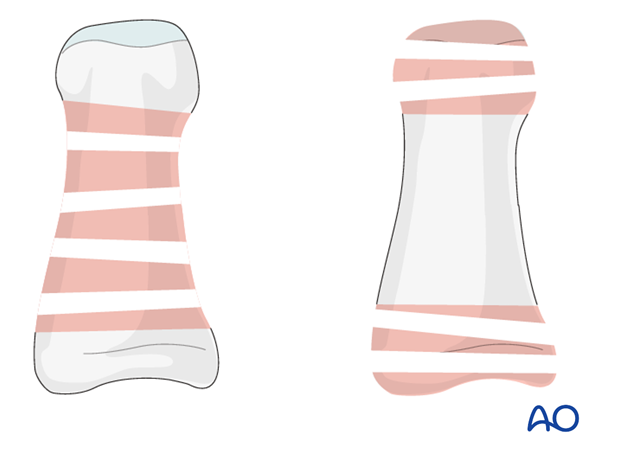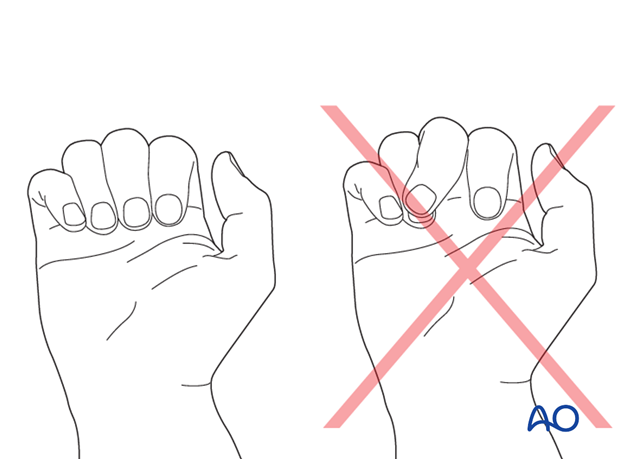Nonoperative treatment
1. Principles
Undisplaced, or minimally displaced, fractures of the diaphysis of the middle phalanx can be treated nonoperatively.
Undisplaced metaphyseal and articular fractures may also be treated nonoperatively.

In fractures distal to the PIP joint, rotational overlap occurs only in the presence of fairly large degree of displacement. In such cases operative treatment is indicated, if malrotation can not be corrected by closed reduction.

2. Reduction
Reduction is achieved by applying longitudinal traction to the finger.
Rotational malalignment is also corrected.
Any angular deviation can be checked by comparison with the adjacent fingers, and must be reduced.
Check the reduction using image intensification.

3. Option 1: Finger splint ,or “buddy strapping”
Finger splint
In compliant patients, undisplaced, or minimally displaced, fractures can be treated with a dorsal finger splint, combined dorsal and palmar splint, or a protection jacket.

Buddy strapping
Undisplaced, stable fractures can be treated with buddy strapping to the adjacent finger, to neutralize lateral, rotational forces on the finger.

4. Option 2: Immobilization with palmar splint
In noncompliant patients, or in cases of dorsal soft-tissue injury, a palmar splint may be applied with the hand in an intrinsic plus (Edinburgh) position and the wrist in slight extension of 20-30 degrees.
The splint is held in place with an elastic bandage. The bandage should not be overtightened at the level of the wrist joint, in order to avoid excessive swelling of the hand.
Direct skin contact of adjacent fingers should be prevented by placing gauze pads between them.
This splint is easy to apply and needs no hand therapy during the period of immobilization. A potential disadvantage of this technique is the complete immobilization of uninjured fingers and joints.

5. Follow up
X-ray checks of fracture position have to be performed immediately after the splint has been applied.
Follow-up check x-rays in the splint should be taken after 1 week, and possibly after 2 weeks. Immobilization is continued until about 4 weeks after the injury. At that time an x-ray without the splint is taken to confirm healing. Splinting can then usually be discontinued and active mobilization is initiated. Functional exercises are recommended.
If after 8 weeks radiographs confirm healing, full manual loading can be permitted.













